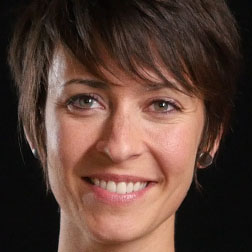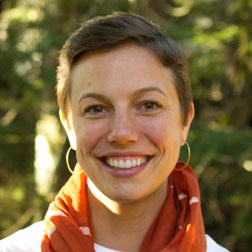Recently I have been facilitating a group of 22 leaders that is about to begin a major transformative process.
A newly configured team, they are coming together via a recent integration of three different organizations to collaborate on an organizational renewal strategy to move into the next era.
When we first met, what immediately struck me was the complexity of the group. The breadth and level of detail in their discourse just simply boggled my mind.
Ask them whether the new organization was a department, division, or a business unit, and you’ll hear 22 different ideas. Ask them why they are coming together, or where they are going and you’ll hear 22 different ideas.
Many individuals in this group also have strong and diverging opinions about what this new team should focus on and they are more than happy to present the facts to back up their case. And as many as that held reservations about proceeding and were clearly not yet fully “in”—and they all feel they’re responsible for an almost endless set of plans, commitments and priorities.
In short, it’s a recipe for mind-numbing incoherence and immobility.
Which is more or less what started to happen…
Right away, I noticed that my cognition was sending out warning signals of “information overload”. The level of multiplicity didn’t feel good in my body—I sensed my energy was pulled in different directions, part of me agitated and compelled to take action—to fix a problem, any problem; while another part of me was surrendering to a blanket of mental fatigue.
My perceptual antennae started to shut down.
I wondered to myself, “What do they need right now? What is the right response from me, if anything, in this moment?”
Before I relate what happened next…I’d like you to consider what you would have done.
I know, the suspense is surely killing you, but seriously—if you can, don’t read any further until you pause and consider how you would respond. What would you do when faced with a group dynamic like this one?
* * *
If one of our Integral Facilitators asked me that question, I would typically make the case for the facilitator to brighten his or her presence and relate fully to their intention.
As a practicing Integral Facilitator, that was my first instinct. (Okay, second. The first was to leave the building.) I turned my attention to my own presence and my awareness of my intention.
Breathing into my intention (to be of service, to be a responsive vehicle for the group’s intention) I allowed the other objects in my awareness to gently dissolve.
Doing so enabled me to feel how ‘their stuff’ registered in my interior, which I allowed to inform my response. More than feeling a sense of empathy and a degree of emotional resonance with the group (with feeling states that included optimistic, wary, excited, uneasy, keen, skeptical, hesitant and bold), my awareness moved towards not-knowing.
I intuited that by slowing down and turning my attention inward, what I was doing for myself was exactly what the group needed as well.
So I invited the group to more consciously relate to this moment, not the plans for the future or the commitments from the past. From presence, I invited them to practice receptivity, and engage a deeper level of listening to each other.
From there, we framed the group’s listening as an inquiry into what needs to be spoken from the interior of the group, and we began to listen to one another with a clear intention to receive.
By slowing down the process, the multiplicity of the ideas and options dropped away, the advocacy for pet projects ceased, and a deeper pattern in the group’s expression emerged.
It became obvious that the group’s intention to create a more responsive and adaptable organization—grounded in the here and now—was a shared desire that brought coherence into the room.
This heightened receptivity allowed the group to see how its intention was not only clear but shared. As a result, there was a palpable sense of relaxation and appreciation in the group as the subtle UNITY in this shared intention and desire were experienced. What a relief!
This practice of receptivity, if it can become an ongoing intentional practice, will become an embodied sensitivity in the group’s competencies, and ultimately generate a new way of being, a new culture of adaptability and responsiveness, which is what they are all seeking.
Yes, it takes a long time for a group to integrate these skills—but at some point the skills will cease to be an object of awareness, and will instead BE the group’s natural way of operating.
The question that this experience underscores is one that many groups and organizations share today:
How can we be adaptable and responsive when we perceive that we have a million and one commitments to fulfill?
Though my group didn’t realize it, this question was actually in the room with us from the very beginning. And behind the question was an assumption and a practical truth: we can’t.
When groups are faced with incoherence and complexity, and hampered by a poorly defined shared sense of identity, adaptability and responsiveness feel out of reach.
But what my experience revealed to me in such clear contrast was how the ‘deeper’ move—the choice to slow down, turn inside and go deeper in the face of complexity and immobility—was actually the precise remedy that shifted the system.
Practicing receptivity helped the group to experience its collective interior, the submerged territory of hopes, fears, desires and intentions—the raw ingredients for the emerging culture and identity of this new group.
With this sense of unity and the coherence articulated in a shared intention, over the next few meetings they started to mobilize to re-engage with the complexity of their context.
Their shared intention provided a higher-order through line and orienting point for the details and multiplicity of options to be assessed.
And as the quality of their experience continued to shift, a responsive and adaptable collaboration, and lightness and enjoyment emerged.
Rebecca Colwell
Co-Founder, Program Director — Integral Facilitator
CEO—Ten Directions




7 thoughts on “Meeting Complexity with Receptivity”
Hi Rebecca
Thanks for this model of how to go ahead in the midst of complexity. I,m beginning a group on women,s shared housing in the second half of life and expect at my first meeting to encounter folks of many stages. You give me a clue about how to begin which is to find common values to bring some unity. Chioosing who to live with and how to live with thise others are complicated decisions with no hard or fonal answers. I envision down the road being a facilitator for helping living communities find a workable design for cooperative living. Seems like a integral theory could help, at least me at first, get a grip on what is happening. How do we live together on this planet is what this is all about.
Thanks for sharing this Rebecca, I really appreciate the work you are taking on and the vision for new forms of living in a cooperative way.
The nuggets from the post that you highlight are important – tune into your inner awareness before you step into the complexity of the undertaking. Integral Theory is indeed very helpful for working with more complexity, and the essential value is magnified when it is integrated as your embodied being, rather than being simply a reference tool or methodology. Our programs reinforce this by continually pointing to the inner evolution of self as instrument as a facilitative leader. How do you use Integral Theory in your work now?
Rebecca –
I am struck by how much your “story” sounds like Thomas Huebl’s “Transparent Communication”. It is a consciousness awareness of “group energy body” – rather than the unconsciousness that most leaders/facilitators/members have of the” group energy body”. Once the leader – or even members – can point this out – it is like a fish being aware of the water it swims in.
Once all the members of a group are aware of this “group energy body” and that they are a part of it, they can begin to see/feel how member’s individual contributions either “vitalize” the group or undercuts the vitality of the group. When individual members of a group spend some time developing this “meta” awareness, developing this subtle energy competency, their ability to function as a group makes a quantum leap. IMHO – this is taking a group from First Tier to Second Tier – as a group -not doing it on an individual basis.
Take Care
Hey Charles, nice to hear from you. I appreciate how you are comparing this to Thomas’s training.
Indeed, as Integral Facilitators we are working with more and more of the subtle dynamics that are present, and if we can and if appropriate, we bring that to light in the group’s awareness. Like you, I find it very useful to consider the capacity the group needs to grow or transform. Besides meta awareness and working with more subtle energy, what have you discovered that can uplift a group?
Oh how I wish I had been introduced to this method years ago when I first became a mediator! Most academic training focused little on how as a leader you can “be one with them but not one of them”. It is so easy to be pulled into the frenetic energy whirling around a chaotic, desperate group. I can think of a dozen instances when I experienced this same sort of energy depletion working with groups like this one so I really did stop to wonder what my initial instincts are when it happens.
My first thought was that I would want to try and do it for them by insisting they scale back, first dealing with those who were still on the fence. But of course, this would only be partially effective to perhaps get the group to feel as though something is happening that resembles movement.
Starting with my own energy and setting the intention for compassionate inquiry is a much better strategy. Think I just had a ‘life A-ha’ moment here.
Hi Chelsey, thank you for sharing your A-ha with us! I think you nailed it – that awakening in the moment that gives you a vantage point to respond (or not) more skillfully. My more mature self can look at all the good intentions of my earlier self (jump in to put out the fire!, they need me, they are confused and I can help, they asked me to do something so I want to show them I care etc. ) and set them aside for a deeper purpose or intention.
I love the way you said ” Starting with my own energy and setting the intention for compassionate inquiry is a much better strategy.” – high fives!
Thanks for this illuminating reflection, Rebecca. Would you expand the sound-picture for us a bit? I.e., describe in more detail what you did, what you said, and what the group (or specific individuals) did and said in response, when you brought this into their awareness? I’m craving a mini-movie to know more vividly just how it unfolded. Thank you.